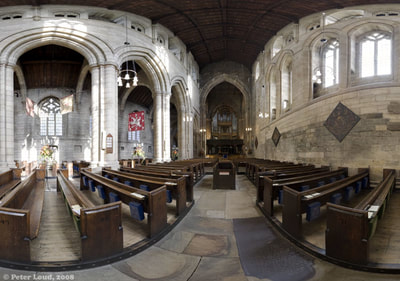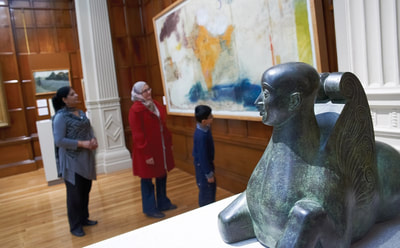Walking slowly along the River Lea, gazing at abstract paintings by Mark Rothko, admiring the craftsmanship of the lofty stone vaults at Hexham Abbey... Just a few of the experiences of some of the heritage assets and sites providing reflection and peace every day across the United Kingdom. Heritage leaders often focus on the story-telling potential of a historic building or the particular landscape or the specific objects displayed. What is less often discussed is how significant heritage and cultural engagement is for us all in supporting - and extending - our experiences of ourselves and each other.
Faith leaders are familiar with individuals and families seeking out the church, temple, mosque or synagogue to celebrate new life and love - and also to grieve and mourn. Faith sites offer spaces for non-believers to be made welcome, to be curious and to rest as well as to pray. Gallery and museum staff are perhaps currently less well recognised as providers of opportunities to explore complex, and potentially difficult, feelings and experiences through events and activities.
Whether exploring the legacy of conflict and imperialism through artefacts at Tate Britain or inviting discussion of faith and equality at Cartwright Hall, gallery and museum staff and volunteers actively use collections to support connections between ourselves and the contemporary world around us. Similarly, visitors of all ages to RSPB Minsmere in Suffolk have shared with Heritage Lottery Fund how important this beautiful site is in providing a sense of calm or maybe contentment or even happiness during difficult periods of ill health and supporting life changes through disability, unemployment or other challenging experiences.
Images courtesy of Heritage Lottery Fund
Recognising the differences in all of these sites of course is important, but we suggest it is also vital to recognise the value of human relationships and connections which all these places enable and have in common. Welcoming people to a nature reserve or a faith site requires skills and resources and acknowledges that how we greet each other and how we make the ‘stranger’ feel at ease is core to our experience of being human.
Most of us have had experiences of entering a building or a social context where we don’t know anybody; what happens next often then decides how long we stay and how we feel when we leave. Increasingly, those who look after faith sites are seizing opportunities to extend the welcome to new visitors curious to learn about the abbey, mosque, temple etc. We think that there is much that can be learned from those who have a similar role in secular spaces.
So we’re suggesting that now is the time to share resources and community capabilities. We propose that that the sacred space of buildings associated with faith and the contemplative, reflective opportunities of many other heritage sites offer fruitful connections in the years ahead. The current focus on the importance of wellbeing and the role that heritage can play here, provides contemporary relevance for all of us involved in the next steps in community building, whether starting within faith or cultural contexts.
These shared opportunities bring benefits to a wider range of people and can bring communities together who have been previously distanced, whilst keeping the sites vivid, relevant and informed by contemporary needs and human experience.
Sara Crofts is Head of Historic Environment at Heritage Lottery Fund and Liz Ellis is Policy Advisor Communities and Diversity. Heritage Lottery Fund is a partner in the Empowering Design Practices project.



 RSS Feed
RSS Feed